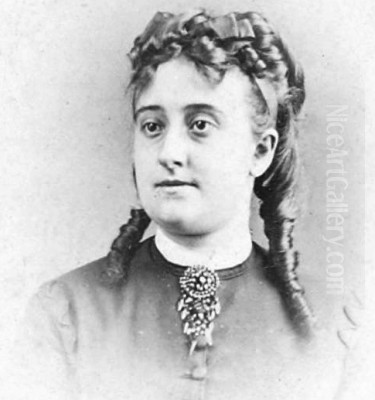
Eva Gonzalès stands as a significant, albeit sometimes overlooked, figure within the orbit of French Impressionism. Active during a transformative period in European art, she navigated the complex Parisian art world of the latter nineteenth century with determination and a unique artistic vision. Though her career was tragically cut short, her work offers a compelling perspective on modern life, filtered through a sensibility that was both indebted to her famous mentor and distinctly her own. Her life, spanning from April 19, 1849, to May 5, 1883, encapsulates a pivotal era of artistic experimentation and societal change, particularly concerning the role of women in the arts.
Parisian Roots and Early Artistic Inclinations
Born in Paris, Eva Gonzalès was immersed in a cultured and supportive environment from a young age. Her father, Emmanuel Gonzalès, was a respected novelist and playwright of Spanish descent, and her mother, a musician of Belgian origin, fostered an appreciation for the arts within the household. This upbringing provided Eva with access to the literary and artistic circles of the French capital, exposing her early on to the intellectual currents that were shaping modern culture. Unlike some of her contemporaries who faced familial opposition, Gonzalès received encouragement to pursue her artistic talents.
Her formal art education began around the age of sixteen. She initially entered the studio of Charles Chaplin, a successful society painter known for his elegant portraits and genre scenes depicting fashionable women. Chaplin's atelier was one of the few private studios that accepted female students at the time, offering women professional training outside the then male-only École des Beaux-Arts. Under Chaplin, Gonzalès would have received a solid grounding in academic drawing and painting techniques, focusing on refined finishes and graceful compositions, skills evident even in her later, more Impressionistic works.
The Pivotal Encounter with Manet
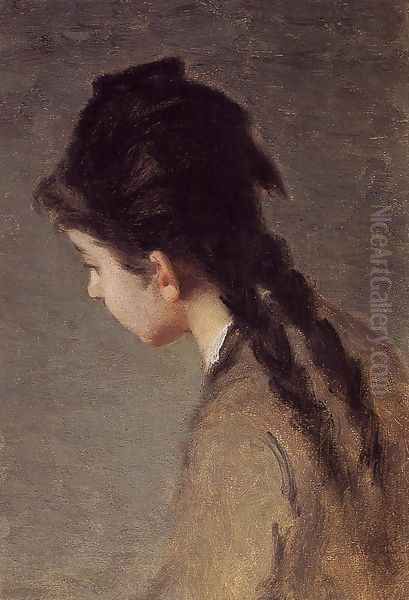
A defining moment in Eva Gonzalès's artistic development occurred in February 1869 when she was introduced to Édouard Manet. Manet, already a controversial and leading figure of the avant-garde, was known for challenging academic conventions with paintings like Le Déjeuner sur l'herbe (1863) and Olympia (1863). Impressed by Gonzalès's talent and potential, Manet accepted her as his student – remarkably, she would become his only formally acknowledged pupil. This association profoundly shaped her artistic direction and public perception.
Almost immediately, Manet began a portrait of his new student, Portrait of Eva Gonzalès (1870). The painting depicts her seated at an easel, working on a still life, dressed in a fashionable white dress. Exhibited at the Paris Salon of 1870, the portrait served as a public announcement of their teacher-student relationship. While intended as a tribute, the painting received mixed reviews, with some critics finding the pose stiff or the likeness unflattering. Nevertheless, it cemented Gonzalès's connection to the controversial leader of the Batignolles group, the precursor to the Impressionists.
Working closely with Manet, Gonzalès absorbed his approach to modern subject matter, his bold brushwork, and his interest in the effects of light and shadow, particularly his use of strong contrasts and a relatively dark palette compared to later Impressionists like Claude Monet or Camille Pissarro. Her early works after meeting Manet clearly show his influence in their subject matter, composition, and technique.
Forging an Independent Path
While Manet's influence was undeniable, particularly in her early years under his tutelage, Eva Gonzalès was determined to develop her own artistic voice. She shared Manet's interest in depicting contemporary life but often focused on more intimate, interior scenes, particularly those centered on women and children. Her work frequently explores themes of domesticity, quiet reflection, and the private world of women, subjects also explored by contemporaries like Berthe Morisot and Mary Cassatt, but rendered with Gonzalès's distinct sensibility.
Gonzalès maintained a commitment to careful drawing and structure beneath her increasingly free brushwork. Unlike some Impressionists who dissolved form completely in light and color, her figures often retain a sense of solidity and presence. Her palette, while incorporating Impressionist techniques like visible brushstrokes and attention to light, often favored more subtle harmonies and a nuanced range of tones, sometimes retaining the darker backgrounds characteristic of Manet's earlier work, rather than adopting the high-keyed, plein-air palette of Monet or Alfred Sisley.
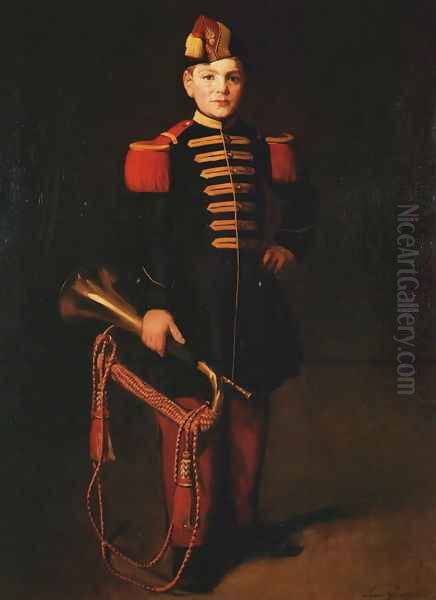
She also became highly proficient in the medium of pastel, using it to create works of remarkable delicacy and immediacy. Pastels allowed for a directness and spontaneity that suited her interest in capturing fleeting moments and subtle expressions, particularly in her portraits and studies of women. This technical versatility distinguished her within the Impressionist circle.
Navigating the Salon System
Unlike Berthe Morisot or Mary Cassatt, who eventually allied themselves firmly with the independent Impressionist group and exhibited in their groundbreaking, anti-establishment shows, Eva Gonzalès consistently chose to submit her work to the official Paris Salon. The Salon was the traditional, state-sponsored venue for artists to gain recognition and patronage, despite its often conservative jury. Manet himself maintained a complex relationship with the Salon, seeking its validation even while challenging its norms, and Gonzalès likely followed his lead in this regard.
Her debut at the Salon came in 1870, the same year Manet exhibited her portrait. She presented Enfant de troupe (The Little Soldier) and other works. Enfant de troupe, depicting her younger brother in military attire, was well-received and demonstrated her technical skill and ability to handle modern subjects within a relatively conventional format acceptable to the Salon jury. This initial success encouraged her to continue pursuing recognition through official channels.
Throughout the 1870s and early 1880s, Gonzalès regularly exhibited at the Salon, showcasing portraits, genre scenes, and still lifes. While this strategy gained her a measure of public visibility, it also meant her work was judged alongside more traditional academic painting and sometimes compared, often unfavorably, to that of her mentor, Manet. Critics frequently discussed her work primarily in relation to his, sometimes dismissing her as merely an imitator, a common challenge faced by female artists associated with prominent male figures.
Key Works and Artistic Themes
Eva Gonzalès produced a significant body of work during her relatively short career. Her paintings and pastels reveal her evolving style and recurring interests.
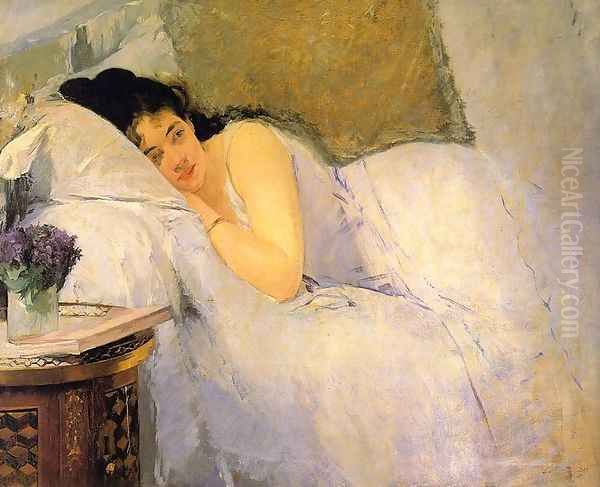
A Loge at the Théâtre des Italiens (1874): This is perhaps her most famous work and a prime example of her engagement with modern Parisian life. It depicts a man and a woman seated in a theatre box, looking out towards the audience or stage (which remains unseen). The composition, with its focus on the spectators rather than the spectacle, echoes themes explored by contemporaries like Edgar Degas and Pierre-Auguste Renoir (whose own La Loge was exhibited the same year). Gonzalès's version is notable for its sophisticated handling of blacks and whites, the intimate yet detached atmosphere, and the psychological nuance in the figures' expressions. It clearly shows Manet's influence but asserts her own compositional strength and mood.
Nanny and Child (c. 1877-78): This tender portrayal of domestic life showcases Gonzalès's skill in capturing intimate moments. The work depicts a nanny tending to a young child in a softly lit interior. The brushwork is fluid, and the palette is gentle, emphasizing the quiet bond between the figures. It reflects the Impressionist interest in everyday scenes but rendered with a particular sensitivity and focus on female experience, a domain she shared with Berthe Morisot.
Still Lifes and Floral Studies: Gonzalès excelled in still life painting, often using flowers as her subject. These works allowed her to explore color, texture, and light with considerable freedom. Her floral arrangements are often vibrant yet elegantly composed, demonstrating both her technical facility and her refined aesthetic sense. These works stand comparison with the still lifes of Manet or Henri Fantin-Latour.
Pastel Portraits: Gonzalès created numerous portraits in pastel, often depicting women in moments of quiet contemplation or engaged in everyday activities like reading or sewing. Works like Morning Awakening (c. 1876) showcase her mastery of the medium, using soft, blended tones and delicate lines to convey intimacy and psychological depth. These pastels highlight her ability to work on a smaller scale with great sensitivity.
Challenges and Contemporary Reception
As a female artist in the late nineteenth century, Eva Gonzalès faced significant obstacles. Despite her talent and connections, she encountered gender bias in the critical reception of her work. Reviews often focused on her femininity, sometimes praising her "delicacy" while implicitly suggesting a lack of strength or originality compared to male artists. The constant comparison to Manet also overshadowed assessments of her own merits. Some critics acknowledged her skill but framed her as perpetually under his influence.
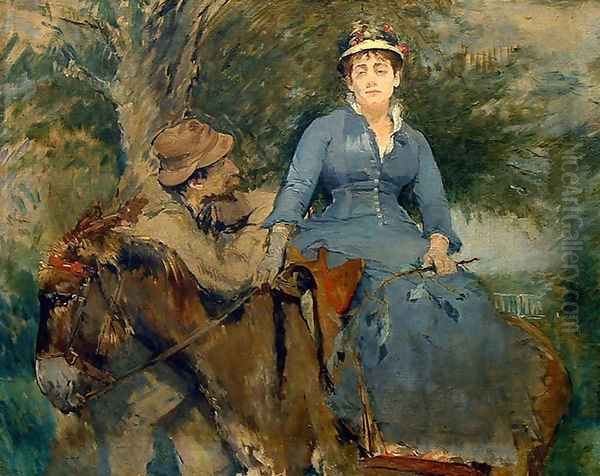
Furthermore, her decision to remain within the Salon system, while perhaps strategically sound for gaining conventional recognition, meant she missed the camaraderie and collective identity forged within the independent Impressionist exhibitions. This might have contributed to her being somewhat marginalized in early accounts of the Impressionist movement, which tended to focus on the core group who exhibited together, such as Monet, Degas, Renoir, Pissarro, Sisley, Morisot, and later, Gustave Caillebotte.
Despite these challenges, Gonzalès persevered, continuing to produce and exhibit work that reflected her unique perspective. She maintained friendships with other artists and writers, including members of the Impressionist circle, even if she did not formally join their exhibitions. Her dedication to her craft was unwavering.
Later Life, Marriage, and Untimely Death
In 1879, after a long engagement, Eva Gonzalès married Henri Guérard, a graphic artist, engraver, and painter who was also a friend of Manet. Their shared artistic interests likely created a supportive partnership. She continued to work and exhibit after her marriage, balancing her professional life with her domestic one. Her later works show a continued refinement of her style, sometimes incorporating brighter colors and looser brushwork, moving further into an Impressionist sensibility while retaining her characteristic elegance and structure.
Tragically, Eva Gonzalès's promising career was cut short. On May 5, 1883, just six days after the death of her mentor, Édouard Manet, she died from an embolism following the birth of her son, Jean Raymond Guérard. She was only thirty-four years old. Her sudden death silenced a unique artistic voice just as she was reaching full maturity as a painter.
Legacy and Reappraisal
Following her death, efforts were made to honor her memory and secure her artistic legacy. A retrospective exhibition of eighty-eight of her works was organized in 1885 at the Salons de La Vie Moderne in Paris. Friends like Manet's brother, Eugène Manet (who was married to Berthe Morisot), and her husband Henri Guérard were involved in promoting her work. However, for much of the late nineteenth and early twentieth centuries, her name remained largely in the shadow of Manet and the more famous male Impressionists.
It was primarily through the rise of feminist art history in the later twentieth century that Eva Gonzalès's contributions began to be re-evaluated and more fully appreciated. Scholars started to look beyond the simplistic label of "Manet's pupil" and analyze the distinct qualities of her work, her navigation of the art world's constraints, and her place alongside other significant female Impressionists like Berthe Morisot, Mary Cassatt, and Marie Bracquemond.
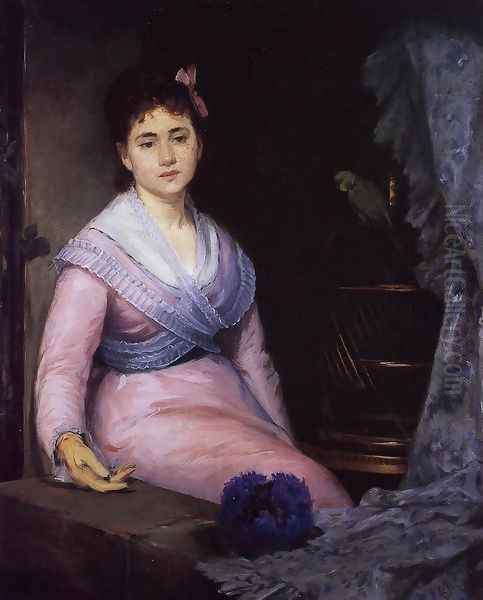
Today, Eva Gonzalès is recognized as a talented and important artist of the Impressionist era. Her work is admired for its technical skill, its sensitive portrayal of women and modern life, and its unique blend of Manet's influence with her own refined aesthetic. While her output was limited by her short life, the paintings and pastels she left behind demonstrate a consistent artistic vision and a quiet determination. She remains a key figure for understanding the diverse currents within Impressionism and the vital role women played in shaping modern art, overcoming significant societal barriers to leave a lasting mark on art history. Her work continues to engage viewers with its elegance, intimacy, and insightful glimpse into the world of nineteenth-century Paris.